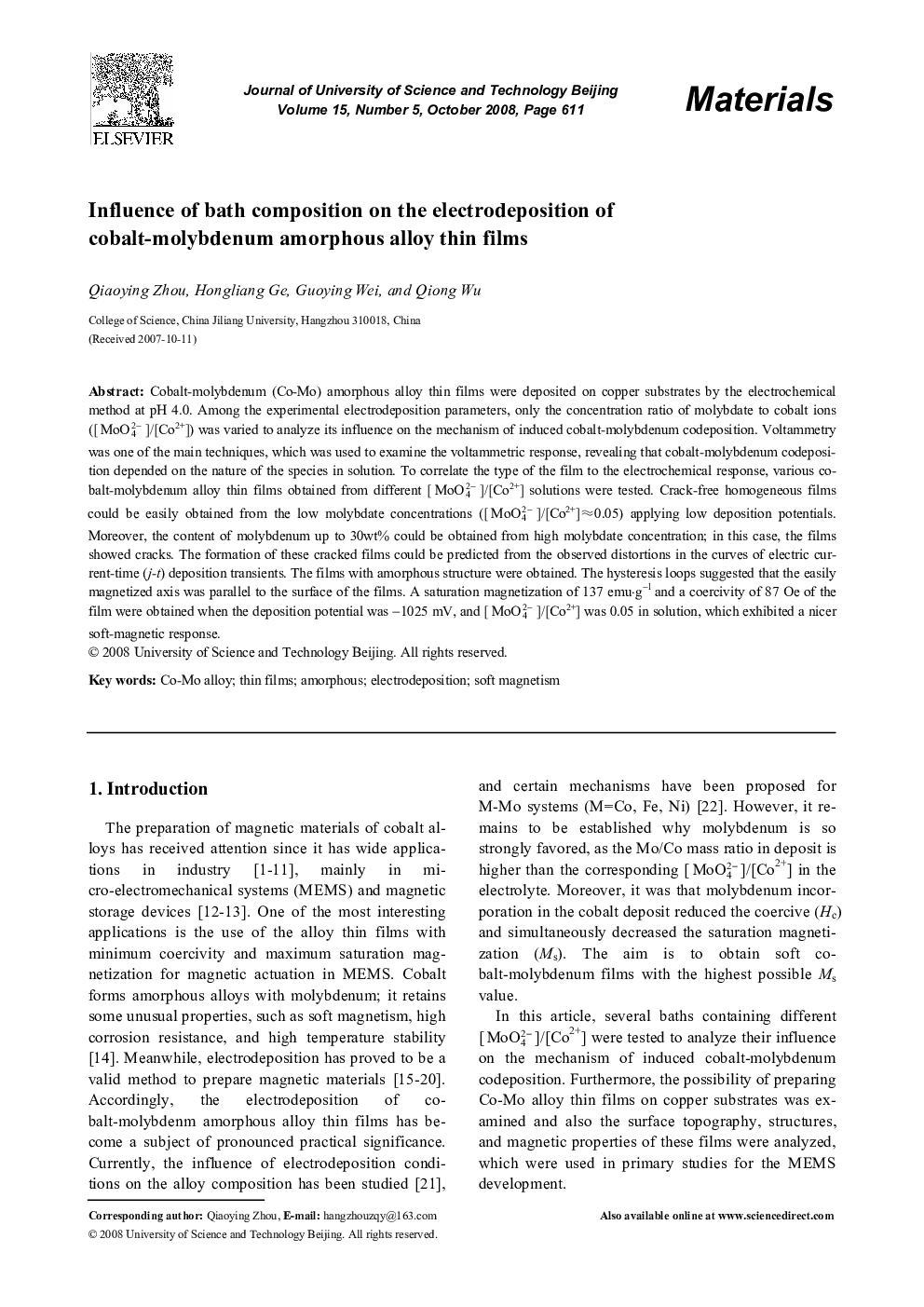| Article ID | Journal | Published Year | Pages | File Type |
|---|---|---|---|---|
| 1630412 | Journal of University of Science and Technology Beijing, Mineral, Metallurgy, Material | 2008 | 7 Pages |
Abstract
Cobalt-molybdenum (Co-Mo) amorphous alloy thin films were deposited on copper substrates by the electrochemical method at pH 4.0. Among the experimental electrodeposition parameters, only the concentration ratio of molybdate to cobalt ions ([MoO42â]/[Co2â]) was varied to analyze its influence on the mechanism of induced cobalt-molybdenum codeposition. Voltammetry was one of the main techniques, which was used to examine the voltammetric response, revealing that cobalt-molybdenum codeposition depended on the nature of the species in solution. To correlate the type of the film to the electrochemical response, various cobalt-molybdenum alloy thin films obtained from different [MoO42â]/[Co2+] solutions were tested. Crack-free homogeneous films could be easily obtained from the low molybdate concentrations ([MoO42â]/[Co2+]) â0.05) applying low deposition potentials. Moreover, the content of molybdenum up to 30wt% could be obtained from high molybdate concentration; in this case, the films showed cracks. The formation of these cracked films could be predicted from the observed distortions in the curves of electric current-time (j-t) deposition transients. The films with amorphous structure were obtained. The hysteresis loops suggested that the easily magnetized axis was parallel to the surface of the films. A saturation magnetization of 137 emu.gâ1 and a coercivity of 87 Oe of the film were obtained when the deposition potential was â1025 mV, and ([MoO42â]/[Co2+]) was 0.05 in solution, which exhibited a nicer soft-magnetic response.
Related Topics
Physical Sciences and Engineering
Materials Science
Metals and Alloys
Authors
Qiaoying Zhou, Hongliang Ge, Guoying Wei, Qiong Wu,
